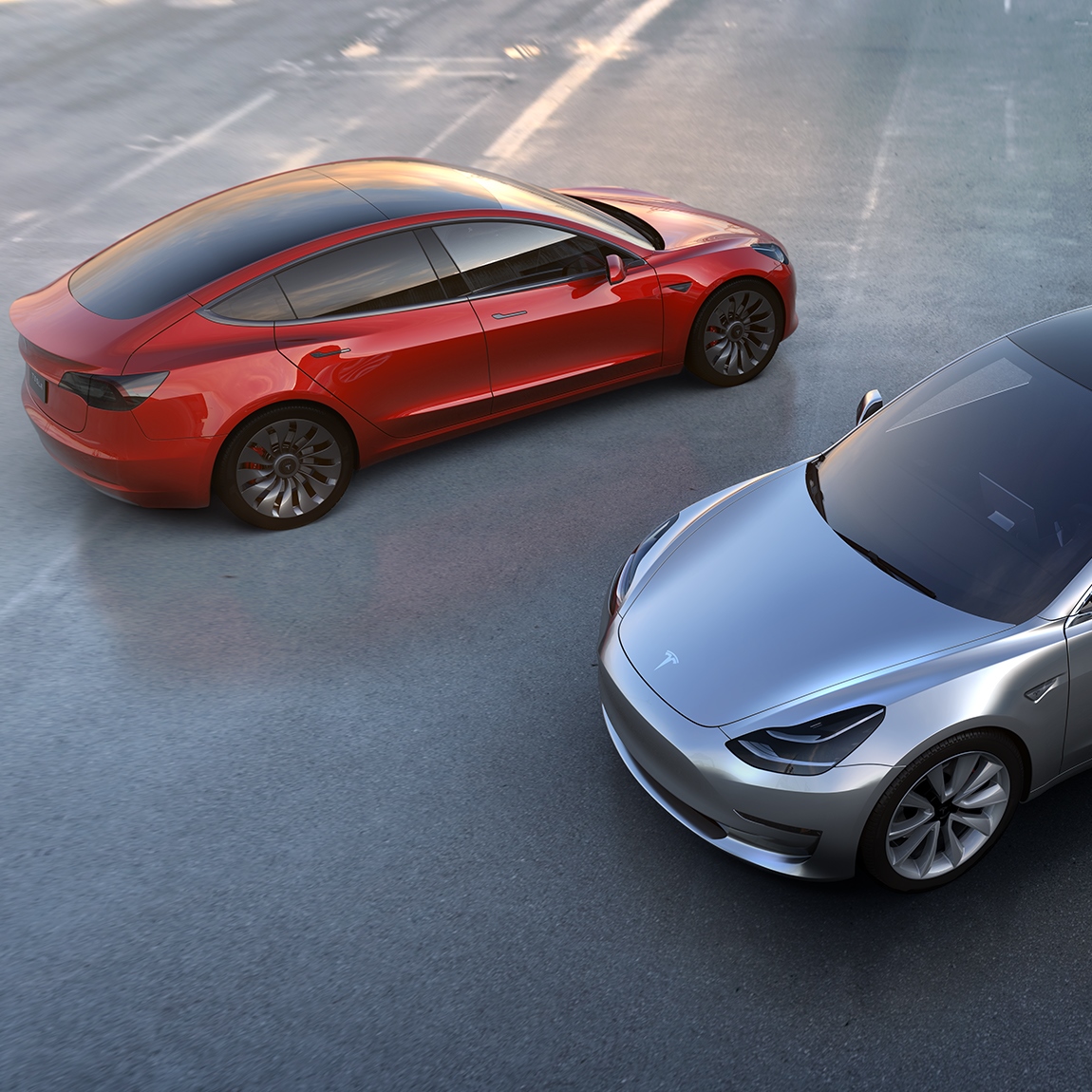Cars and Drivers
Tesla North American Market Could Hit 11 Million per Year

Published:
Last Updated:

Tesla Inc. (NASDAQ: TSLA) was expected to see the first Model 3 roll off its California assembly line on Friday. That could be a watershed date for the company and for the auto industry in general.
The Model 3, with a base price of $35,000, is the first Tesla car priced for the mass market, and one analyst likens the rollout to the launch of Apple’s iPhone, “which proved to be the catalyst for the shift to mobile computing.”
Those are Gene Munster’s words. Munster, of Loup Ventures, is a widely respected Apple analyst, and he and his team believe that the Model 3 drives the addressable market for electric vehicles in North America to a potential annual sales volume of 11 million.
According to Munster:
If Tesla captures 25% of this 11 million vehicle addressable market by 2025, Tesla would generate $105 billion in annual revenue from the Model 3. It will likely take a few years for Tesla to ramp production; we see 2019 as the first year the company will tap into this broader market. Using the Street’s $20 billion revenue estimate as a starting point in 2018, and growing that to $105 billion in 2025 (from the Model 3 only) implies a 27% average annual growth rate for revenue from 2018-2025.
Tesla expects to ramp production to 500,000 vehicles by the end of next year, but investors have had a hard time buying that, especially given that the company reported deliveries of just 47,100 vehicles for the first half of this year, the low end of its goal for deliveries of 47,000 to 50,000. The share price dropped more than 18% last week as a result.
Munster and his team also ran an analysis on the cost of ownership for a Model 3 compared with the popular Toyota Camry. Even though the base price of a Model 3 is 42% higher than the base price of a Camry, the annual cost of ownership over a five-year ownership period reduces that difference to just 13%. Munster writes:
As more Teslas find their way onto the road, the general public will become increasingly aware of the benefits of Tesla ownership and likely view the 13% total cost of ownership difference as insignificant. We expect this “see it and want it” phenomenon to cause an acceleration in Model 3 demand in 3-5 years.
Munster estimates that Tesla has more than 500,000 orders for the Model 3, even though the company has been under-selling preorders given the long lead times: an order placed today for the Model 3 won’t be filled until January 2019.
Investors are worried that the company has “a decade of profitless prosperity ahead of it,” a reasonable concern given that street estimates put operating margins at around 1% over the next few years. Munster and his team believe operating margins could approach 15% over the longer term. Investors “love the product, don’t like the stock.”
We covered a report issued last week by Bloomberg New Energy Finance projecting that electric vehicles will account for 54% of worldwide new car sales by 2040, up from about 1% last year. As the widely recognized first mover in that space, Tesla is better positioned than any of the big automakers to dominate the market.
That domination could strengthen if Tesla can deliver a fully autonomous vehicle by its target date of the end of 2019. Tesla is likely to be first past the post here as well, according to Munster:
Tesla is solving the AI [artificial intelligence] challenge with a bottoms-up approach. Teslas that are on the road today using Autopilot are gathering data that’s being fed into Tesla’s autonomy AI. In about 2 years the company expects to have enough AI learning to turn on full autonomy at no additional cost. In other words, for every mile a Tesla drives today, traditional auto manufacturers fall a mile further behind.
Will investors continue to be patient with the company’s stock? Can Tesla reach its ambitious production goals? Can a fully autonomous vehicle be developed in just over two years? Big questions, big risks, big rewards.
Thank you for reading! Have some feedback for us?
Contact the 24/7 Wall St. editorial team.